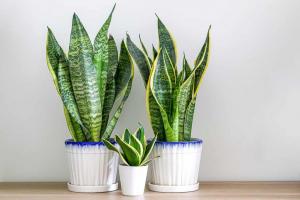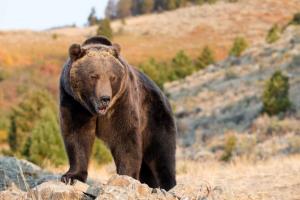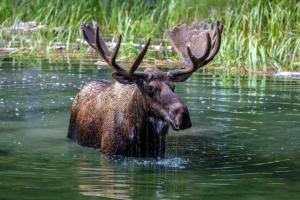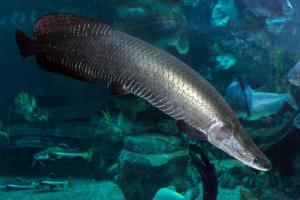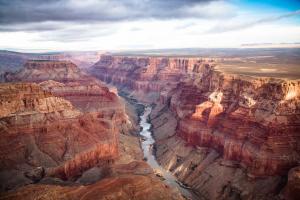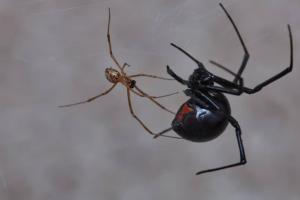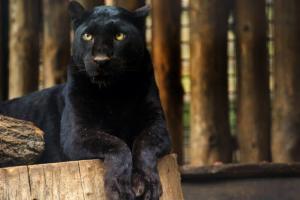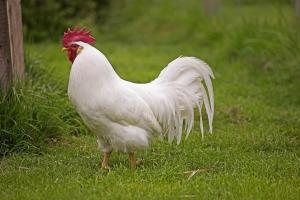8 Resilient and Beautiful Plants That Thrive In the Tundra
The tundra, a harsh and unforgiving landscape, may seem like an unlikely place for life to flourish. But, these eight resilient and beautiful plants do more than survive, they thrive.
Nature never ceases to amaze us. The tundra is home to a unique array of plants that have adapted to its extreme conditions.
In this article, we’ll explore some of these remarkable tundra plants, their descriptions, what makes them special, and where they thrive.
8 Beautiful Tundra Plants
Surviving in the tundra is no simple task. But these eight resilient and beautiful plants thrive in the tundra’s harsh environments.
Arctic Moss (Calliergon giganteum)
Arctic moss is a low-growing, dense moss that carpets the tundra floor, forming lush green patches. It can survive in freezing temperatures and low light conditions.
The most unique thing about this arctic moss; it is an aquatic plant found growing on the bottom of tundra lake beds and in and around bogs and fens.
Tundras across North America, Europe, and Asia host arctic moss growth.
Arctic Willow (Salix arctica)
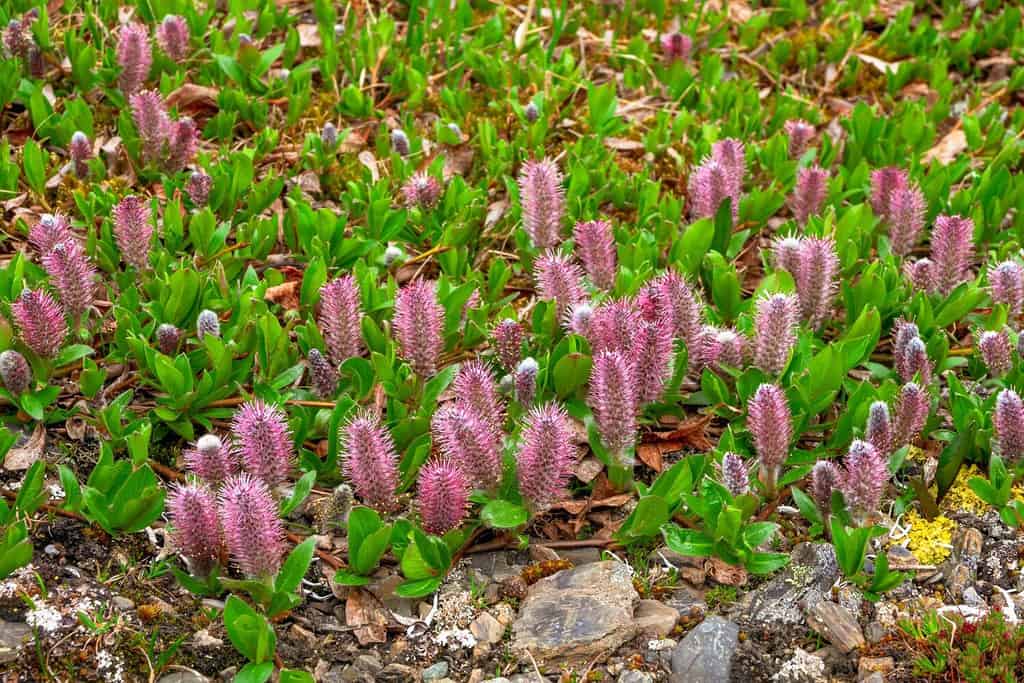
©Stanislav71/Shutterstock.com
This small, shrub-like plant features slender, silvery leaves and can reach heights of up to 15 inches. This Arctic willow is one of the first plants to sprout in the spring, providing early food for wildlife.
Arctic willow thrives in the tundras of the Arctic and subarctic regions.
Arctic Poppy (Papaver radicatum)
With delicate, bright yellow petals and a low, clump-forming growth habit, the Arctic poppy adds a splash of color to the tundra. It can bloom in temperatures as low as 35°F (2°C).
Arctic poppies thrive in the Arctic regions of North America, Europe, and Asia.
Arctic Cotton (Eriophorum scheuchzeri)
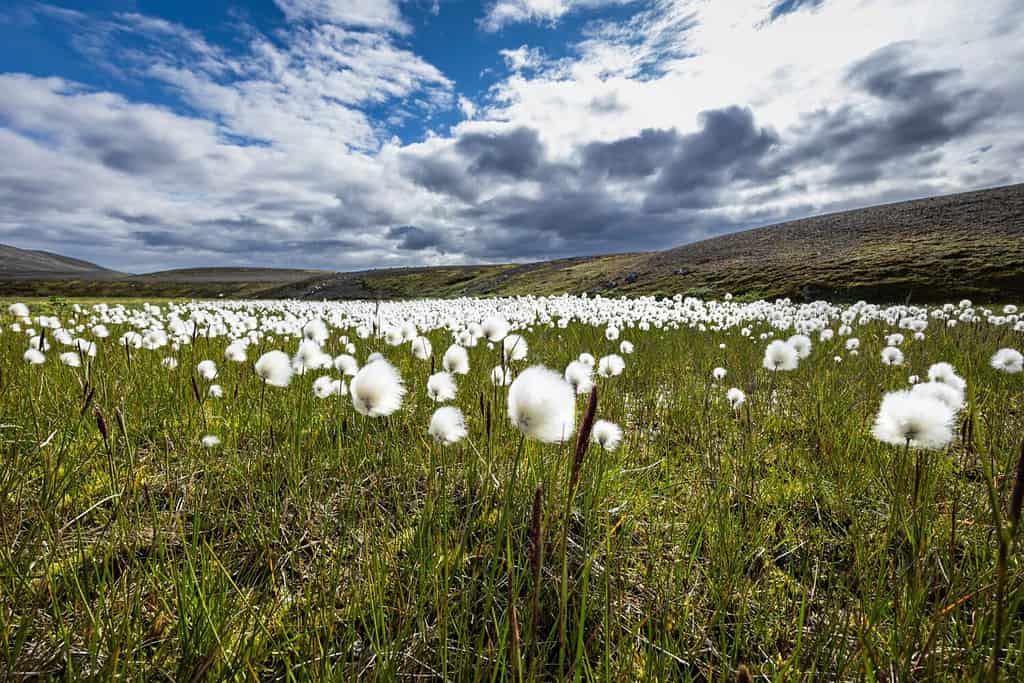
©Henryp982/Shutterstock.com
Resembling tufts of cotton, these plants have long, slender stems and white, fluffy seed heads. It plays a crucial role in stabilizing the tundra soil and preventing erosion.
Arctic cotton is widespread in the tundras of the Northern Hemisphere.
Purple Saxifrage (Saxifraga oppositifolia)
Purple saxifrage boasts vibrant pink to purple flowers and forms low, compact mats of foliage. It’s one of the hardiest flowering plants, blooming even in freezing temperatures.
This resilient plant grows in tundras across North America, Europe, and Asia.
Arctic Bearberry (Arctostaphylos uva-ursi)
With evergreen leaves and red berries, Arctic bearberry is a tough, ground-hugging shrub. It’s a vital food source for many Arctic animals, including bears and birds.
Arctic bearberry thrives in the tundras of the Arctic and subarctic regions.
Moss Campion (Silene acaulis)
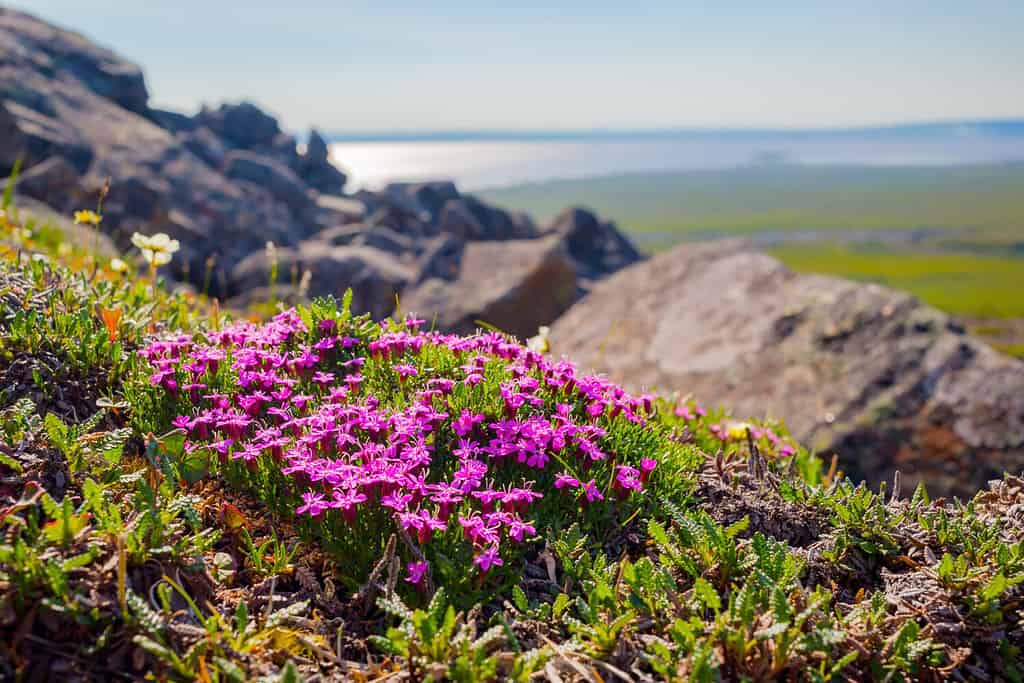
©Andrei Stepanov/Shutterstock.com
Moss campion forms small cushions of pink or purple flowers amidst the rocky tundra. Its low growth helps it withstand harsh winds and extreme temperatures.
Moss campion can be found in tundras worldwide, from the Arctic to high mountain ranges.
Arctic Lupine (Lupinus arcticus)
Arctic lupine features spiky leaves and tall spikes of blue or purple flowers. It enriches the soil by fixing nitrogen, benefiting surrounding plants.
This resilient lupine thrives in Arctic and alpine tundras.
Survival in the Tundra: A Lesson in Adapting and Thriving
What makes these plants so special is their remarkable ability to adapt and thrive in one of the harshest environments on Earth.
Let’s take a closer look at the challenges they face and the unique strategies they employ to overcome them.
Extreme Cold
Tundras are known for their bone-chilling cold, with temperatures that can drop as low as -40°F (-40°C). To survive in such conditions, tundra plants have evolved various mechanisms.
Some have developed tiny, compact growth forms close to the ground, which minimizes exposure to the frigid air. Others have adapted by having specialized tissues that can tolerate freezing temperatures.
Short Growing Season
Tundras experience short growing seasons, often just a few weeks in the summer when the sun is above the horizon 24/7.
To make the most of this brief window of opportunity, these plants grow rapidly and produce seeds quickly. They are masters of efficiency.
Low Light Levels
Tundras receive minimal sunlight during the long, harsh winters.
To cope with this, tundra plants have developed to capture as much light as possible when it’s available. Some have reflective surfaces on their leaves, while others orient themselves to face the sun.
Harsh Winds
The tundra is notorious for its fierce winds, which can quickly dry out and damage delicate plant tissues.
To combat this, many tundra plants grow close to the ground, forming mats or cushions that offer protection from the elements.
Permafrost
Beneath the tundra’s surface lies permafrost, a layer of permanently frozen soil. This presents a unique challenge for plants trying to establish deep roots.
To adapt, tundra plants have developed shallow root systems that are well-suited to the thin active layer of soil above the permafrost.
Nutrient Scarcity
Tundra soils are often nutrient poor, which limits the availability of essential elements for plant growth.
To overcome this limitation, some tundra plants form symbiotic relationships with fungi that help them acquire nutrients.
Wildlife Interaction
Tundra plants are essential for the survival of many Arctic and subarctic animals. They provide food and shelter for a variety of creatures, from insects to large mammals.
These plants have adapted not only to withstand grazing, but also to benefit from it.
The Vital Role of Tundra Plants in Wildlife Survival
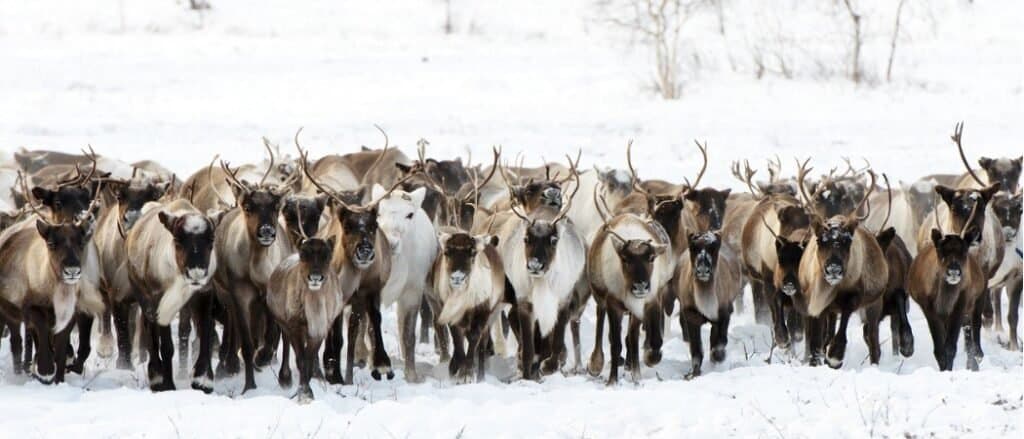
©longtaildog/Shutterstock.com
While tundra plants may seem inconspicuous against the backdrop of the icy landscape, they play a crucial role in supporting the survival of a wide range of wildlife.
In this section, explore how these resilient plants provide essential resources for various Arctic and subarctic animals.
Food Source
Tundra plants are a primary food source for many herbivorous animals.
For example, the Arctic hare relies heavily on the Arctic willow’s tender leaves and shoots as a primary food source during the short growing season. Additionally, caribou and reindeer graze on a variety of tundra vegetation, including mosses, lichens, and sedges.
Nesting and Shelter
Tundra plants offer nesting sites and shelter for various bird species. The dense mats of Arctic moss and cotton grass provide secure nesting grounds for birds like the snow bunting and Lapland longspur.
These protective havens help birds incubate their eggs and raise their chicks away from predators.
Pollinator Support
Some tundra plants rely on pollinators to reproduce, and in return, they provide nectar as a food source.
The Arctic poppy, for instance, attracts pollinators like bumblebees with its bright, fragrant flowers.
By doing so, it facilitates not only its own reproduction but also supports the survival of pollinator species in the tundra.
Winter Survival
During the harsh winter months, tundra plants continue to provide for wildlife.
For instance, the Arctic bearberry produces bright red berries that remain on the plant throughout the winter.
These berries are a critical food source for animals like the Arctic fox and ptarmigan when other food options are scarce.
Microhabitats
Tundra plants create microhabitats that benefit a wide range of organisms.
Mosses and lichens, in particular, provide a soft and insulated surface for small mammals like lemmings and voles. These rodents, in turn, become prey for larger carnivores, forming the base of the Arctic food chain.
Nutrient Recycling
Tundra plants help in nutrient recycling within the ecosystem.
As they absorb nutrients from the soil and atmosphere, they concentrate these elements in their tissues.
When these plants are eaten by herbivores and decompose, they release these nutrients back into the environment, enriching the tundra soil.
Climate Change Indicators
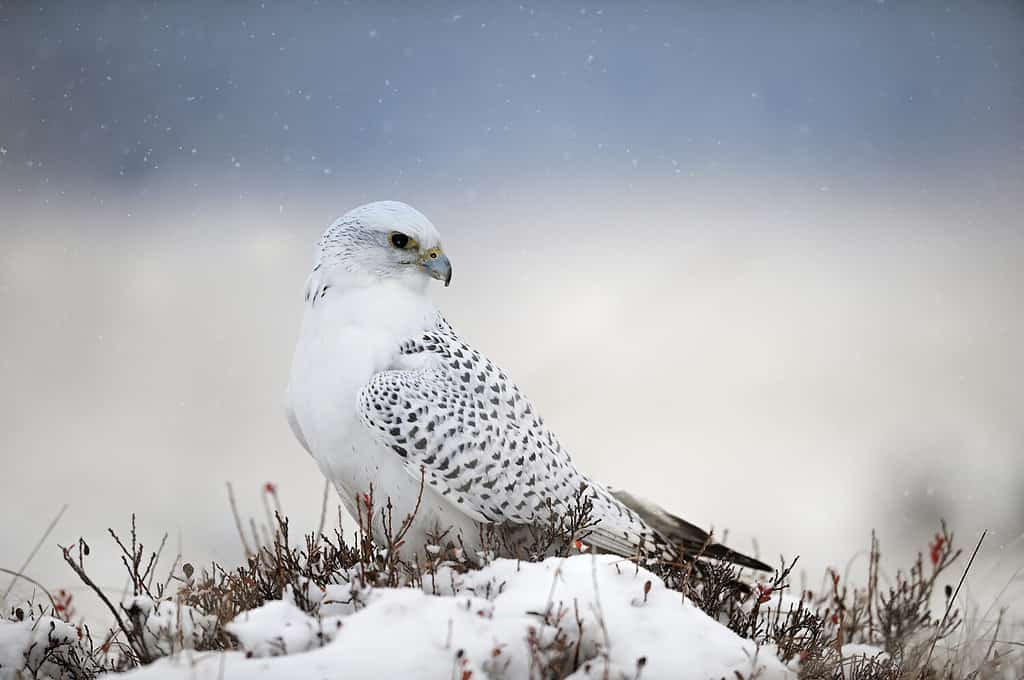
©Michal Pesata/Shutterstock.com
Tundra plants also play a role in indicating climate change impacts.
As the tundra warms, certain plant species may expand their range northward.
Scientists study these shifts as indicators of broader environmental changes, providing valuable insights into climate change trends.
A few notable examples illustrate the intricate relationships between tundra plants and wildlife survival:
- Lemmings and Moss Campion: Lemmings, small rodents that are a vital food source for Arctic predators like snowy owls and Arctic foxes, often use the cushion-like mats of moss campion as shelter and breeding sites.
- Caribou and Arctic Lichen: Caribou, also known as reindeer, rely heavily on lichens during the winter when other vegetation is buried under snow. Arctic lichens, often found in association with rocks and soil, are a vital source of sustenance for these iconic creatures.
- Snow Bunting and Arctic Willow: The snow bunting, a small songbird that migrates to the Arctic during the summer, nests among the branches of the Arctic willow. This shrub provides both camouflage and protection for the birds and their chicks.
Where Can You Find These Remarkable Plants?
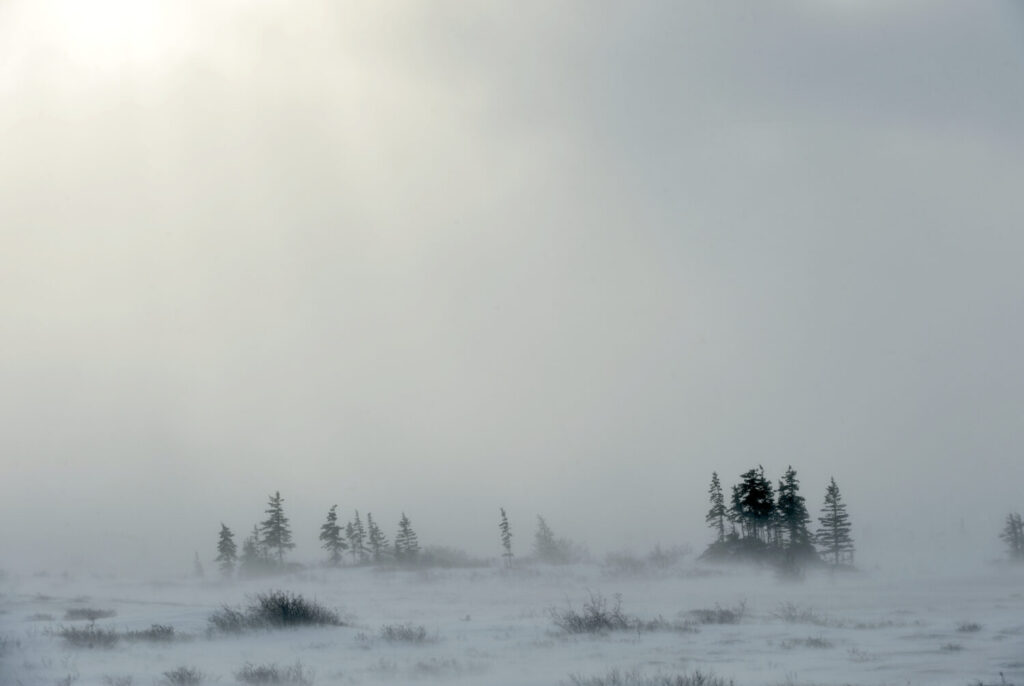
©Sergey Uryadnikov/Shutterstock.com
Tundra ecosystems exist across the globe, primarily in the high latitudes of the Northern Hemisphere.
Here are some key regions where you can witness these remarkable tundra plants in their natural habitat:
Arctic Tundra
Stretching across Alaska, northern Canada, Greenland, and parts of Russia, the Arctic tundra is home to an array of tundra plants.
The iconic Arctic moss, bearberry, and willow can be found here.
Alpine Tundra
High mountain ranges worldwide, including the Rockies in North America and the Alps in Europe, host alpine tundras.
Here, you can encounter plants like moss campion and Arctic lupine.
Subarctic Tundra
These regions encircle the Arctic Circle and include areas in Scandinavia, Siberia, and northern North America.
Subarctic tundras are often characterized by the presence of plants like purple saxifrage and cotton grass.
Antarctic Tundra
While most tundras are in the Northern Hemisphere, the Antarctic tundra can be found on the continent of Antarctica.
It’s a land of extremes, and you can discover unique plant life adapted to the harshest conditions on Earth.
The tundra may seem like a desolate wasteland, but it’s a testament to nature’s resilience and adaptability. The plants that thrive in the tundra have evolved ingenious strategies to survive in this harsh environment. From the hardy Arctic moss to the vibrant purple saxifrage, each plant plays a vital role in the delicate balance of the tundra ecosystem. These plants persevere against all odds.
Tundra plants are not just passive residents of a harsh environment; they are active participants in the web of life in the Arctic and subarctic regions.
Their role in providing food, shelter, and support for countless species highlights the interconnectedness of ecosystems and underscores the importance of preserving these unique habitats.
The survival of tundra wildlife and the health of the tundra itself are intimately linked to the resilience of these remarkable plants.
